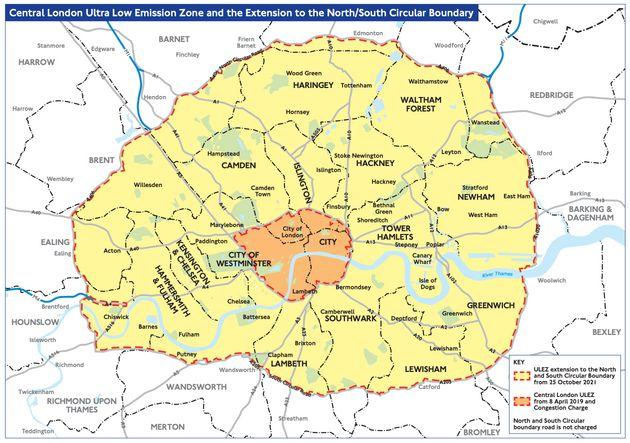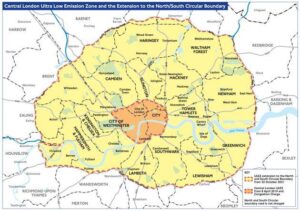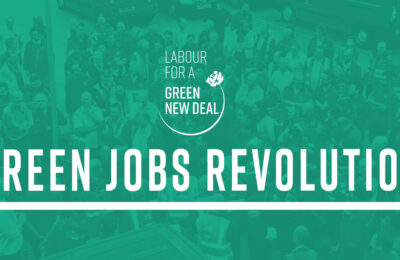This report came out in February but it seems relevant to revisit it now in the light of the Uxbridge by-election result and the clamour to row back on our environmental policies.
In the next couple of days we will publish further reflections on Uxbridge and ULEZ.
New report reveals the transformational impact of the expanded Ultra Low Emission Zone so far
Major new report shows that harmful pollution emissions have reduced by 26 per cent within the expanded ULEZ area – compared with what they would have been without the ULEZ coming into force.
Report shows that the ULEZ has reduced harmful pollution levels in central London by nearly half compared to what they would have been without the ULEZ.
In inner London, pollution levels are 21 per cent lower than they would have been without the ULEZ
Each day, 74,000 fewer polluting vehicles are seen driving in the zone, a cut of 60 per cent since expansion in October 2021.
Thanks to the ULEZ expansion to inner London, over four million people now breathe cleaner air, including children in 1,362 schools.
The first year of the Ultra Low Emission Zone (ULEZ) expansion to inner London has achieved a dramatic reduction in emissions and air pollution, and a huge increase in the share of vehicles that meet the ULEZ standards, according to a major new report from City Hall and peer reviewed by Dr Gary Fuller at Imperial College London.[1]
Despite huge progress, the whole of London still exceeds the World Health Organization’s guidelines for air quality, and over half of deaths attributable to air pollution are in outer London.
Around 4,000 Londoners die prematurely every year due to toxic air, and the report published today shows that the Mayor’s air quality policies, in particular the ULEZ and LEZ schemes, are having a transformative impact – cutting the number of older, more polluting vehicles seen driving in London and reducing the levels of harmful air pollution.
The ULEZ was introduced in central London in 2019 and expanded to inner London in October 2021. The central London ULEZ had a clear impact – in its first 10 months of operation, it helped reduce road transport nitrogen oxides (NOx) emissions by 35 per cent and CO2 emissions by 6 percent in the zone. Today’s landmark report shows that the ULEZ expansion has built on these benefits, with harmful nitrogen dioxide (NO2) levels 46 per cent lower in central London and 21 per cent lower in inner London than they would have been without the scheme. Thanks to the expansion of the ULEZ in inner London, NOx emissions have reduced by 23 per cent (13,500 tonnes) across London cumulatively since 2019 compared with what they would have been without the ULEZ. Within the existing ULEZ area, emissions have dropped by 26 per cent (5,000 tonnes) over the same four-year period, compared with what they would have been.
The number of older, more polluting vehicles in the zone has also continued to reduce significantly, dropping by 60 per cent since the inner London expansion came into operation in October 2021– an average reduction of 74,000 polluting vehicles every day seen driving in the zone. Overall, there were nearly 50,000 fewer vehicles seen in the zone on an average day – a reduction of almost five per cent compared to the month prior to the expansion.
The Mayor announced last November that the ULEZ will be expanded across all London boroughs in August 2023 to help bring the air quality and associated health benefits to the five million people living in outer London.
Today’s new report shows how vital further action is as average pollution concentrations at background monitoring sites in outer London have remained constant since 2021, with over half of deaths attributable to air pollution in outer London. The whole of London still exceeds the World Health Organization’s guidelines for air quality and there is no safe level of exposure.
The Mayor of London, Sadiq Khan said:
“The evidence from this landmark report is clear – the ULEZ works. This is beyond dispute. It has already reduced toxic air pollution by almost half in central London and by over a fifth in inner London, transforming the quality of air for four million Londoners.
“But there’s still more to do. Toxic air is a matter of life and death, with around 4,000 deaths in London attributed to air pollution in 2019. It’s also stunting the growth of children’s lungs and causing people to develop life-changing illnesses, such as cancer, lung disease, dementia and asthma.
“With the majority of deaths attributable to air pollution in outer London, it’s vital that we expand the ULEZ London-wide. As Mayor, I simply won’t accept that the five million people in outer London shouldn’t be able to benefit from the same life-saving health impacts that ULEZ has already brought to the rest of our city. Everyone has the right to breathe clean air.”
Christina Calderato, TfL’s Director of Strategy and Policy, said: “This report is further clear evidence that the ULEZ is highly effective and does what it is designed to do, protect Londoners’ health and significantly reduce pollution. It is great to see that significant numbers of people have moved away from older, more polluting vehicles and some of the most deadly emissions have been cut by a quarter. With London still exceeding WHO guidelines and those in outer London disproportionately suffering as a result of the capital’s filthy air, there is no stronger case to support the zone covering the whole of the city. “We are also cleaning up our fleet with around 900 buses zero emission and through our licensing requirements more than 40 per cent of the capital’s black cabs are now running on electric. We know that ahead of the ULEZ expanding in August some people will need help making the green transition, which is why we have introduced new grace periods for disabled people and made £110 million available to charities, smaller businesses, disabled Londoners and those on low incomes to scrap their vehicles that don’t meet the standards.”
Sarah Woolnough, CEO at Asthma + Lung UK, said:
“The devastating impact that air pollution can have on our lungs and lives should not be underestimated. Toxic air stunts children’s’ lung growth, causes lung conditions and can trigger existing ones – that’s why schemes like the ULEZ that meaningfully reduce air pollution are so needed. The ULEZ expansion across inner London shows that where there is political leadership, things can get better and millions of people can breathe cleaner air. More schemes to tackle dirty air are desperately needed across the country, and more needs to be done to implement them where needed. It is vital that these measures are properly supported with improvements to public transport and schemes to help people transition to cleaner modes of transport.”
Jemima Hartshorn, Founder & Director, Mums for Lungs said: We are really pleased to see that the ULEZ expansion is reducing air pollution. The air across London is far too polluted, with diesel vehicles being the main contributor, stunting children’s lung growth, causing asthma and being linked to cancer. The ULEZ is giving kids a breather – and we need more action to ensure that we can all be healthy in our capital.
Dr Gary Fuller, air pollution scientist from Imperial College London’s Environmental Research Group, and UKRI Clean Air Champion said: “Scientists at Imperial College London worked alongside the Mayor’s team on the evidence base for the ULEZ design and to assess how well it is working.
“The 10th anniversary of the death of Ella Kissi Debrah is a powerful reminder of the impacts of air pollution on London’s children and young people; especially those living, travelling or at school close to major roads. The central London ULEZ, and its extension to inner London, has bought about measurable and sustained improvements to air pollution from traffic.
“Many people fear that traffic will simply divert around low emission zones, worsening air pollution for those that live on the boundaries. However, data from London’s air pollution measurement network has shown that this has not happened. Instead, nitrogen dioxide alongside the North and South Circular roads has shown a strong improvement.
“Many cities in the UK and around the world are looking to follow London’s lead. I hope that the evidence here will improve the design of similar schemes more widely.”
Mark Watts, Executive Director of C40 Cities said: “Congratulations to Mayor Khan on achieving such dramatic results. Thanks to this courageous leadership, millions of Londoners are now breathing cleaner air. Air quality is a top concern for city residents the world over, and London’s example raises the bar for what cities can do with the right measures and the political will to implement them.”
Other key findings in the report include –
Harmful nitrogen dioxide (NO2) concentrations are revealed to have reduced further than originally predicted, and are estimated to be 21 per cent lower in inner London and 46 per cent lower in central London than they would have been without the ULEZ. This is a reduction of 34 µgm-3 in central London and 8 µgm-3 in inner London, compared to the modelled scenario for the same month without ULEZ.
Crucially, NO2 levels have not returned to pre-pandemic levels, indicating that even as traffic levels have risen, cleaner vehicles have had such positive impacts on emissions that air pollution levels continue to be far below what they would have been without the ULEZ and other policies that the Mayor has implemented.
The boundary roads have seen a reduction in NO2 concentrations of between 19 per cent and 27 per cent compared to without the ULEZ
Fine particulate matter (PM2.5) levels have also continued to reduce across London with a 41 per cent reduction in average concentrations in central and inner London since 2017.
Alongside the air quality benefits, the ULEZ has also had carbon reduction benefits. Cumulatively since 2019 it is estimated the ULEZ has led to a reduction of around 800,000 tonnes of CO2 emissions from vehicles across London over the four-year period compared to without the ULEZ, a saving of three per cent. Within the ULEZ area this is a saving of 290,000 tonnes, a reduction of four per cent over the same period. The reduction in emissions is a vital step closer to achieving the Mayor’s aim of reaching Net Zero by 2030.
The ULEZ has had an enormous positive effect on the share of compliant vehicles seen driving in the zone, jumping from just 39 per cent when the scheme was announced in 2017, to 94.4 per cent in October 2022.
Notes to Editors
[1] This report was peer reviewed by Dr Gary Fuller of Imperial College – a leading expert on using data analysis techniques to characterise sources, trends, and changes in urban air pollution to determine if policies to improve air pollution are working. The report uses the same methodology to assess the impacts of the scheme as used in the previous ULEZ impact assessment reports – all of which underwent independent peer review. – https://www.imperial.ac.uk/people/g.fuller
The Mayor has launched a further scrappage scheme worth £110m to support businesses, charities, Londoners on lower incomes and disabled Londoners to replace their old, heavily polluting vehicles with greener options. This is on top of the £61m scrappage scheme launched in 2019.
Londoners receiving certain means-tested benefits and non-means-tested disability benefits can now apply for cash grants of up to £2,000 to scrap their non-compliant cars or motorcycles. Alternatively, for the first time ever, applicants can also choose to receive up to two bus and tram passes, instead of a grant to scrap or retrofit their vehicle. Charities, sole traders and businesses with 10 or fewer employees can also apply to scrap or retrofit their vans and minibuses, with an option to receive up to £9,500 to help cover the cost of a replacement vehicle.
About the report
This report is an evaluation of the impacts of the ULEZ and the LEZ schemes, focusing on one year following the ULEZ expansion to inner London and for the LEZ, over a year and a half on from the enforcement of tighter LEZ standards for buses, coaches and lorries. The report, including the methodology for assessing impacts on air pollutant concentrations, underwent independent peer review.
Emissions are the amount of pollution directly emitted from a particular source, e.g vehicles. Concentration is the amount of pollution in the air at a certain location. Improving health by reducing air pollution concentrations is a key aim of expanding the ULEZ. The policy does this by disincentivising the use of older, more polluting vehicles within the zone which in turn reduces the emissions of pollutants in the area. This leads to a reduction in pollution concentration within the zone. As most vehicles do not drive solely within the zone this positive impact will also benefit those outside the zone.
The ‘central London zone’ constitutes the Congestion Charge area and ‘inner London zone’ extends to the North and South Circulars.
Read the report here




